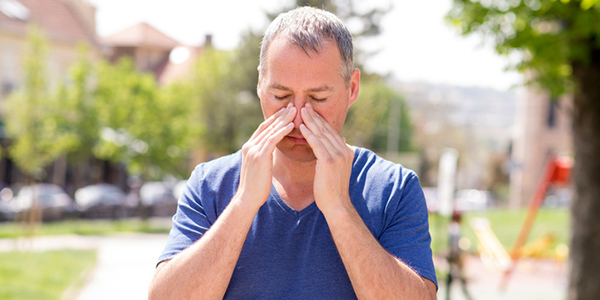About 37 million people suffer from sinusitis, making it one of the most common health conditions in the United States. The actual number of sinusitis cases may be significantly higher since the symptoms are similar to colds or allergies. Because of this, many people don’t seek help from a doctor for proper diagnosis and treatment.

Sinuses are the air-filled pockets around the nose. Each sinus has an opening for draining mucus. Sinusitis happens when bacterial, viral or microbial infections cause inflammation in the lining of your sinuses. If your sinuses are narrow, normal mucus drainage may not happen, which can lead to congestion and infection in the sinuses.
Symptoms of sinusitis include:
- A thick, yellow or greenish discharge from the nose or down the back of the throat
- Nasal congestion or difficulty breathing through your nose
- Throbbing, pain, tenderness or swelling around your eyes, cheeks, nose or forehead
- Aching in your upper jaw and teeth
- Reduced sense of smell and taste
- Cough, which sometimes may worsen at night
- Fever
- Bad breath
Your doctor may also use the following methods to diagnose sinusitis:
- Visual inspection — Your doctor may feel for tenderness in your nose or throat and look to rule out physical conditions that trigger sinusitis, such as nasal polyps or other abnormalities.
- Nasal endoscopy — Your doctor may use a thin, flexible tube (endoscope) with a fiber-optic light. This device is inserted through your nose to allow your doctor to see inside your nasal cavity.
- Imaging — Your doctor may order images to be taken using computerized tomography (CT) or magnetic resonance imaging (MRI), which can show details of your sinuses and nasal area. These may identify a deep inflammation or physical obstruction.
After your examination, your doctor will work with you to determine the best course of action for you based on your specific diagnosis. Sinusitis symptoms can often be relieved with nasal saline rinses, over-the-counter decongestants or, in patients with significant allergies, topical steroids.
Other treatment may include:
- Antibiotic therapy — Your doctor may prescribe an appropriate antibiotic—a medicine that kills the bacteria that causes infection.
- Sinus surgery — Surgery should be considered only if medical treatment fails or if there is a nasal obstruction that cannot be corrected with medications.









